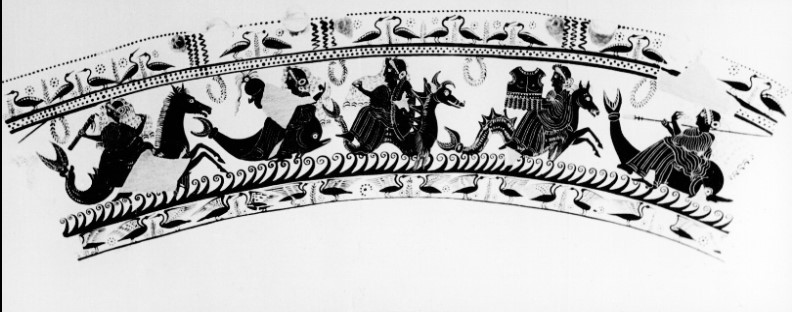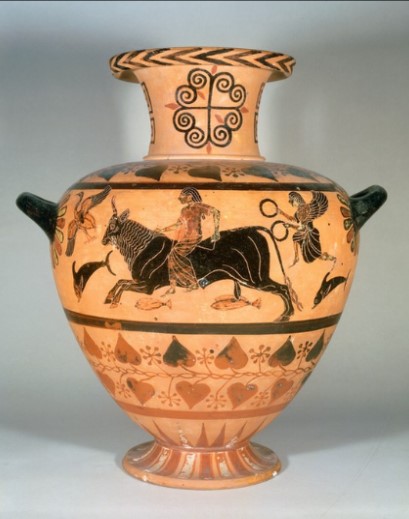Dolphins first started showing up in Greek art around the 17th century BCE. There were depictions of in frescos and on vases. These depictions were seen throughout the various regions of Greece as the Greeks were borrowing from each other and creating their versions of marine life imagery (Hallager 1985). These depictions kept being used in high volumes for centuries into the iron age and occasionally throughout the rest of the history of Greek art. Marine animals are seen in all forms of art for various types of audiences.
One implication of the presence of marine animals is their ties to mythology. The Greeks gods and goddesses had tied to every aspect of their lives, hence they are constantly present in the artworks of the ancient Greeks. Dolphins are an interesting symbol due to their dynamic symbolism in ancient Greek culture. Some accounts claim that Greek and Roman culture regarded dolphins as sacred guardians or sea travelers, further emphasizing the connection between the Greeks and the oceans (Papadoupoulos & Ruscillo, 2002). Dolphins were perhaps the most important sea creature in Greece with multiple stories detailing their love for young boys. Dolphins are often associated with Dionysos as there is a story stating that there had been Tyrrhenian pirates who captured him and while upon their ship, Dionysos transformed them into dolphins (Stebbins 1929).

Dolphins following alongside Nereids carrying pieces of Achilles’ armor. The marine creatures follow each other encircled around the body of the vessel with figures on their backs, each with different elements of the armor. It is suspected that they may be bringing the pieces of armor to Ajax’s tomb.
This mythological story is depicted with fish and dolphins following alongside the scene with Europa being taken away on the bull. In the central body of the hydria, the scene is depicted with Europa on the back of the bull carrying her across the water. There are two dolphins with one leading and the other following behind the bull. There are two fish underneath the bull heading in the same direction.

Emily Matusik '25